MARRONETO

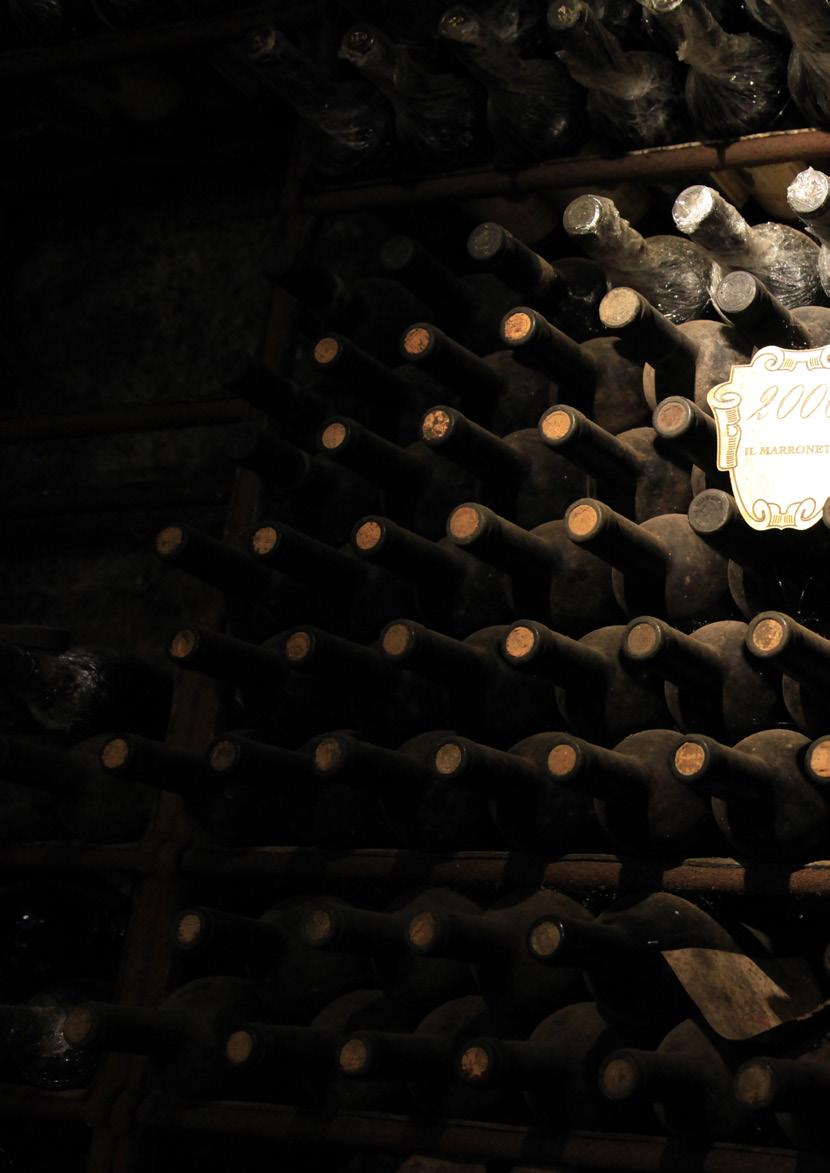
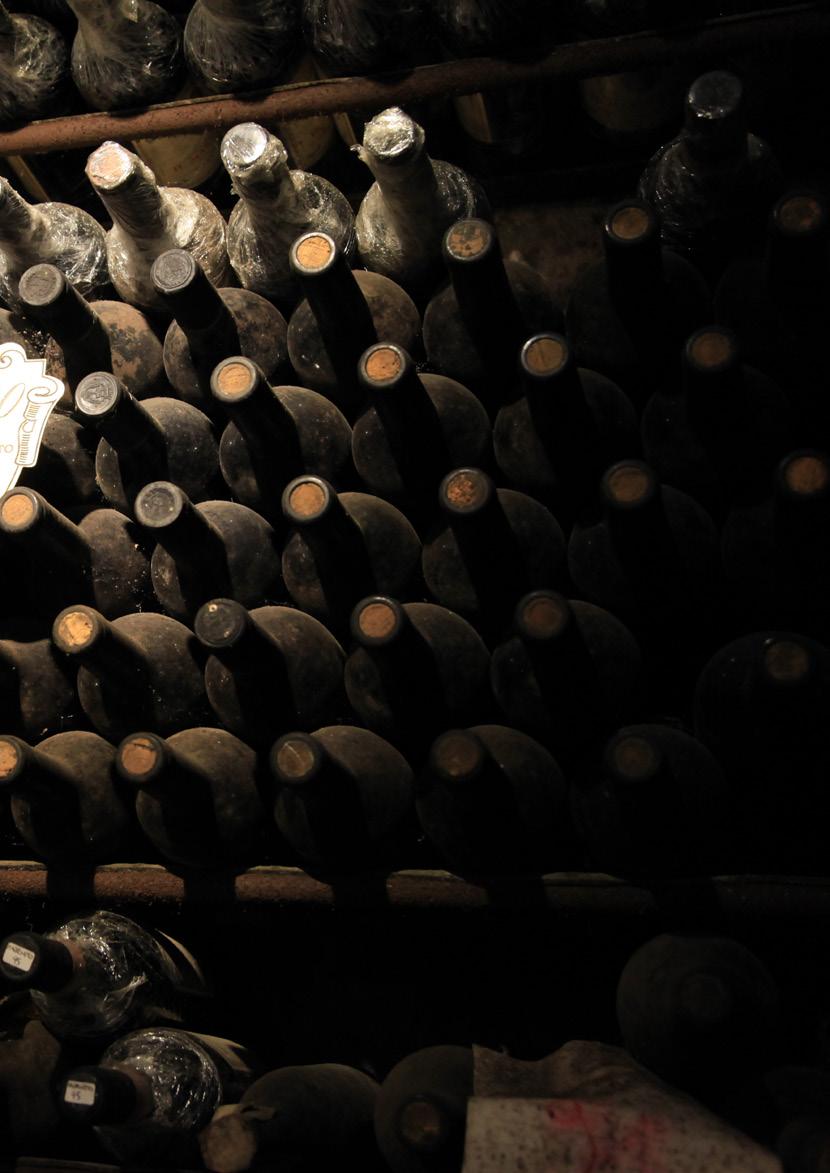
INTRODUCTION

On Will Hargrove (Head of Fine Wines for Corney & Barrow Ltd)’s first visit to Il Marroneto, he had met with Alessandro Mori, the owner and winemaker.
On this second visit, the first for me, we met with Alessandro’s son, Iacopo. Alessandro was riding his bike in Sardinia, getting some short holidays in before the beginning of the harvest.
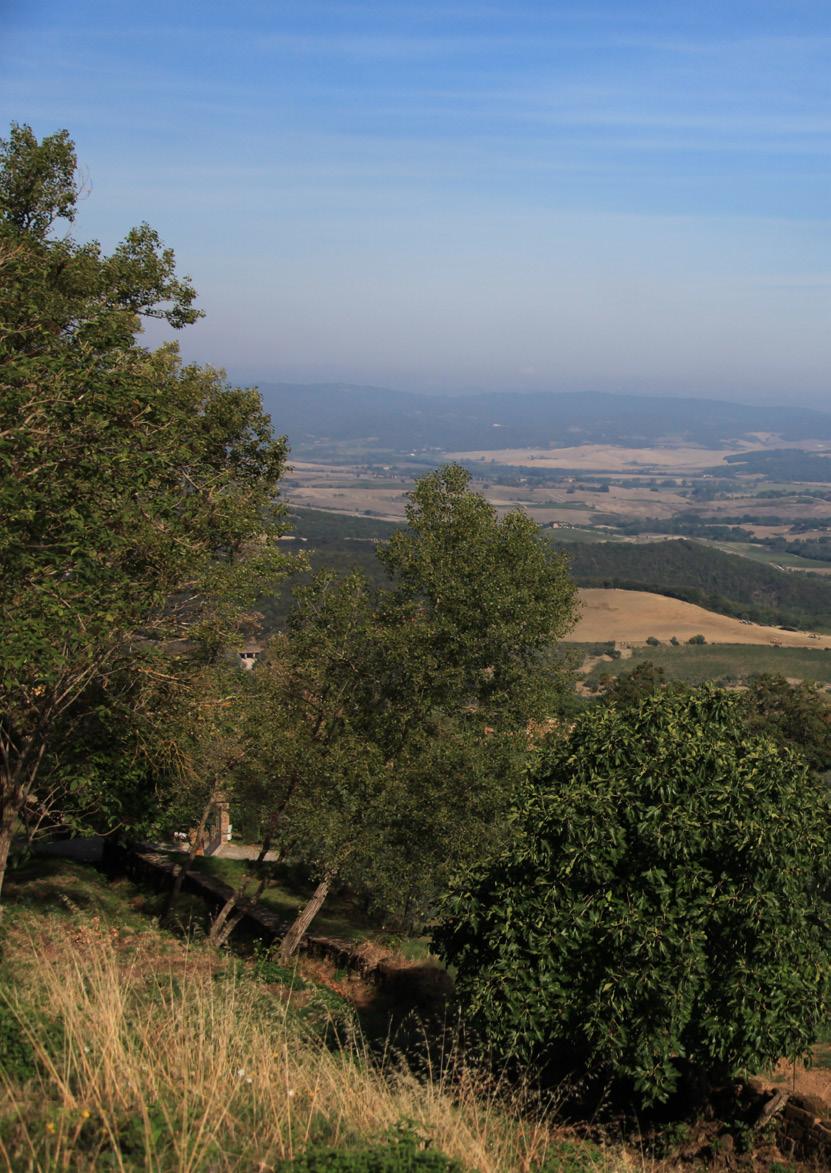
We took the road early in the morning, from Orvieto, to be at the winery by 9 am. We arrived earlier, allowing for some photo shooting of the surroundings. At the moment, the winery’s main building is under renovation. The old bricks and stones of the outside walls are getting some pampering. So, I’ll have to go back for better photos of the building.
We started the visit on the terrace of the winery, overlooking the old vines on the estate as well as the Montalcino plain in front of us, spreading wide, with Siena in the back. It was foggy that day and we guessed at the city more than we actually saw it.
Iacopo recalled the estate history, while we were enjoying the shade of the pergola, loaded with bunches of Sangiovese destined to the Rosso Ignacio. It was already very hot at 9am.
This is our second release for these wines and we are even more excited that the first time. As we get to know the Mori and their wines better, we realise more and more that we are lucky to have this real gem of Montalcino and Italy in our portfolio. We will advise you to add these wines to your collection. Andiamo!!
THIBAUT MATHIEU Managing Director - Corney & Barrow Asia November 2022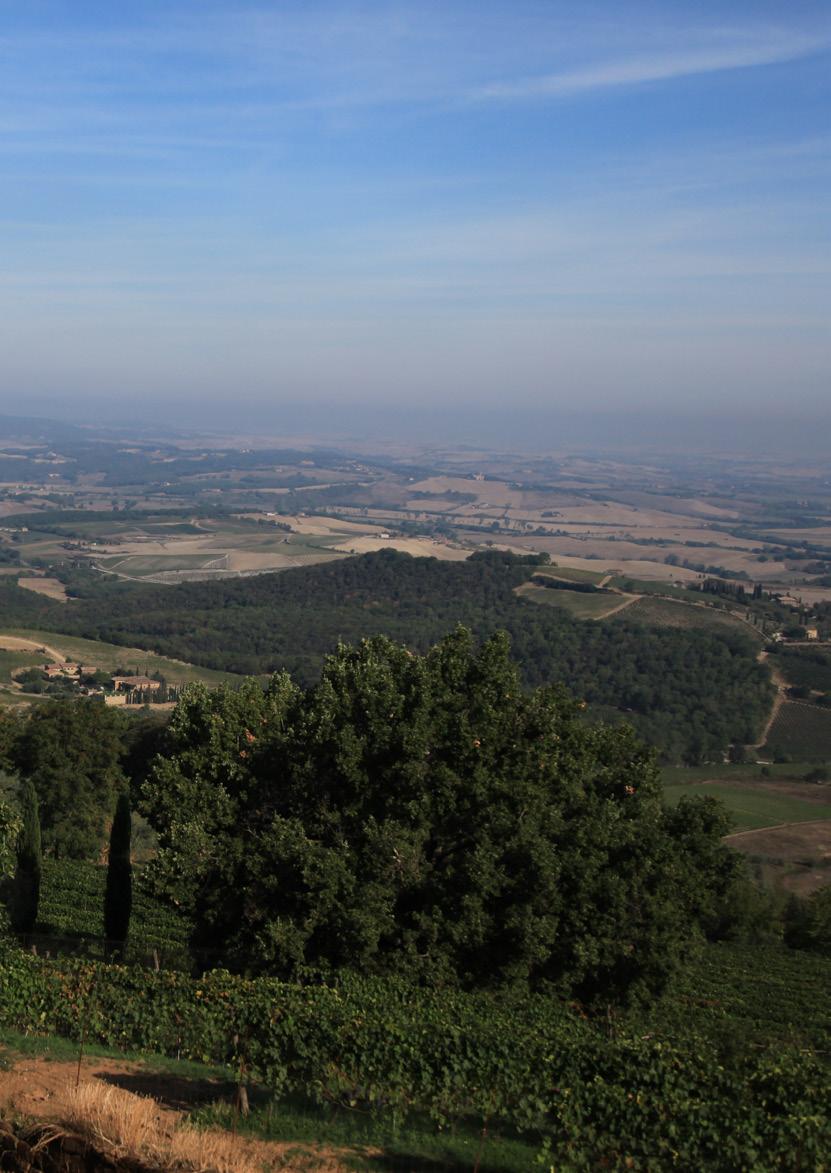
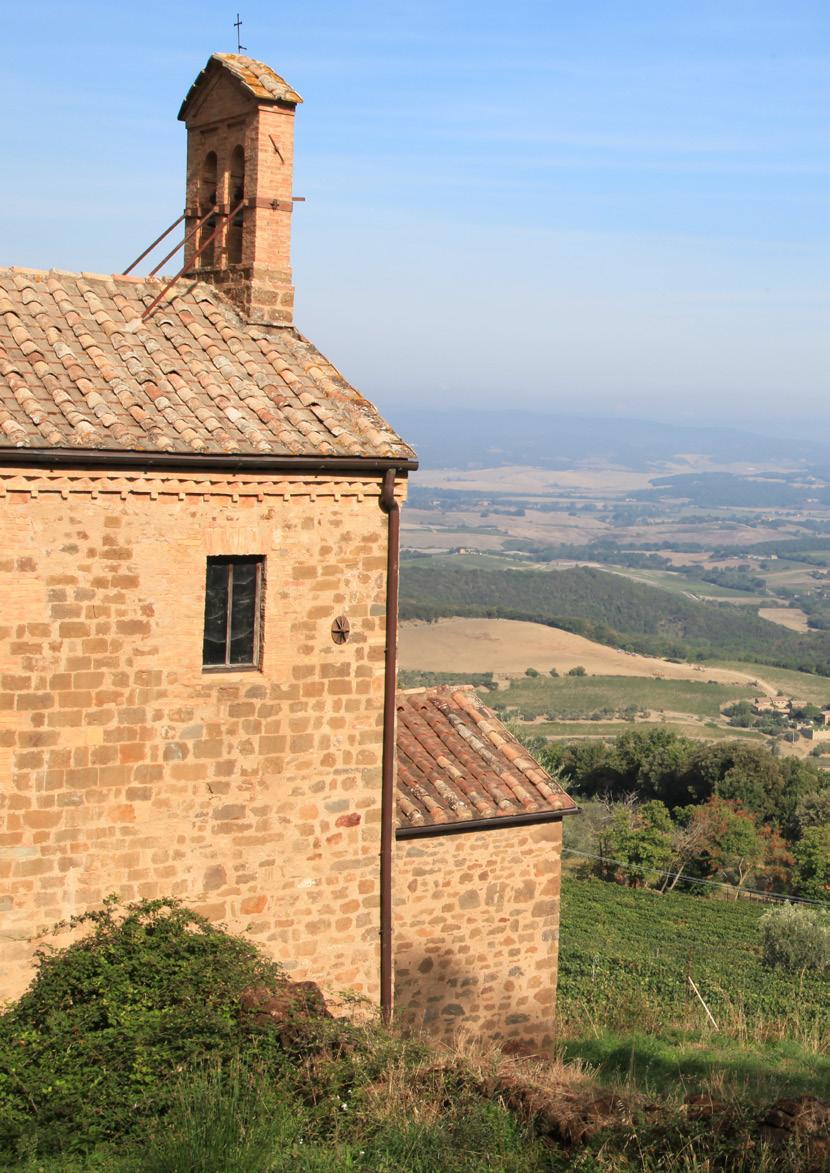
BACKGROUND TO THE ESTATE
The Il Marroneto estate arrived in the Mori family in early 1974, while Iacopo’s grandfather was looking for a week-end family retreat.
The house and the garden were the property of the church. At the end of a lunch with their priest friend, and discussing his real estate plans, said priest took Giuseppe Mori to see the house. The breath-taking view over the valley and seeing Siena on the skyline won him over. He decided to buy the property. The Mori are from Siena. There was an old vine on the estate, not cultivated for commercial purposes but to produce the wine for mass. Maybe it was a holy sign!
The Il Marroneto name comes from the old chestnut dryer on the estate that was used by the nuns of the Madonna della Grazie Covent. Historically, chestnuts (castagne or marroni) were grinded to make flour, used in Tuscan gastronomy for local recipes ranging from savoury to sweet. It was also the main ingredient of a hearty chestnut soup made in Montalcino (zuppa di castagne), for the pilgrims on the Via Francigena, connecting Canterbury to Roma and continuing to Compostelle.
It was under Alessandro’s stewardship that Il Marroneto really became a winery. He was 13 when the first vintage was bottled in 1976, in his 30s when he became the winemaker in charge in 1994. The first bottling of the Brunello was vintage 1980, hooking Alessandro for life.
Mario Cortevesio and his friend Giulio Gambelli, ‘THE’ two references in all things Sangiovese were very much at the inception of this wine story. They strongly advised Giuseppe and his son Alessandro to make wine at their country house having seen the potential of the vineyard.
The winery is bordering the town walls of Montalcino, up on the hill at some 400m of altitude. There is a stunning view on the valley. There is just shy of 6ha of vineyards, in 3 locations, planted in stages between 1975 and 1982/83.
THE VINES, THE CELLAR, THE WINEMAKING
The vines are 40+ years-old on average. The soil is a mix of alluvial sediments, sand, limestone and the Tuscan galestro (a schistous & clayed stone).
The vines are trained using cordone speronato (spurred cordon) as is traditional in Montalcino. The vine keeps permanently two canes, growing in opposite directions, from which new shoots will spring each year. The vines hold 5/6 bunches. The vineyard is autonomous, as Iacopo explained, with minimal intervention from the vineyard team. They don’t work the soil and keep natural grass. The soil is free of any chemical or pesticide, maintained in its pristine unaltered natural condition. During the vine cycle, the team don’t pluck any leaves or shorten any canes. The long branches are folded on the top of the vines, providing useful natural shade and protection against the sun that can be quite severe.
Madonna della Grazie, is a near 2ha vineyard, north east of the winery. It is named after the church at the entrance of the estate. There are 4ha of vines further away.
The winemaking of the Madonna wine is different from the rest of the range. It is a selection of vines and grapes across the holdings of the estate. The juice sees two days of skin maceration before kicking off the fermentation, to extract all the colour and flavours. The team favours a gentle pumping over, to gently extract the colour and the flavours. This is opposite to punching down the cap (called pigeage in French or Italian) which can be brutal and lead to extracting bitter aromatics, or over extract when the berries are rich and ripe. The berries used for making Brunello Madonna della Grazie are “supercharged”.
For the Rosso, Alessandro uses bigger berries with a lower skin to juice ratio. The grapes rest for one day allowing the juice to macerate with the solids. Then the team practices
long daily pump-overs, to increase extraction and bumpup the thickness and richness of the must. The skin cap is broken 3 to 4 times a day, to extract flavours and colours.
The alcoholic fermentation is rather fast, 15 to 17 days and the maceration is not extended once the sugars have all been consumed and transformed. The wine is then separated from the cap and transferred to large botti for ageing. The cellar is not temperature-controlled and is exposed to the outside environment on two sides. You can’t be more natural.
After heavy pressing, the press wine is immediately added to the fresh wine and represents about 10% in the blend. Iacopo explained that using “press wine” is inherited from the past generations of winemakers. They had discovered (empirically!) that the press wine, more acidic than the free run juice, was acting as a natural protective agent against oxidation and bacterial attack and it was beneficial for wines of long ageing.
The wine is left to cold settle for 2 to 3 months and is not filtered. Iacopo keeps the sediment, after racking the botti and allowing gravity to do its work. At the end of the process, they get a single barrel of clear wine.
Absolute attention to detail and cleanliness are the motto at Il Marroneto. The large oak barrels are cleaned 3 to 4 times per year, during the élevage of the new wine, the whole process taking up to 20 man-days. This is an expensive process when you think about it, as some (significant) wine is lost in the process. But it is what it takes to make very high-quality wines.
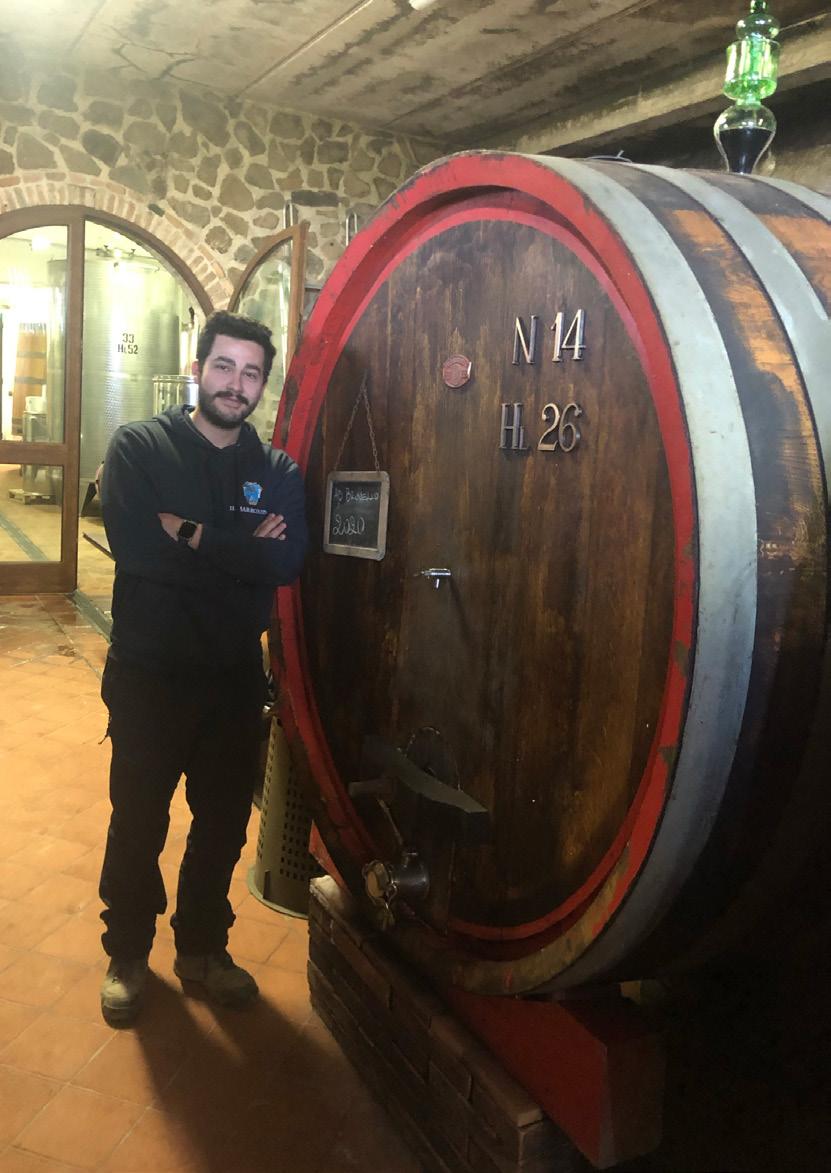
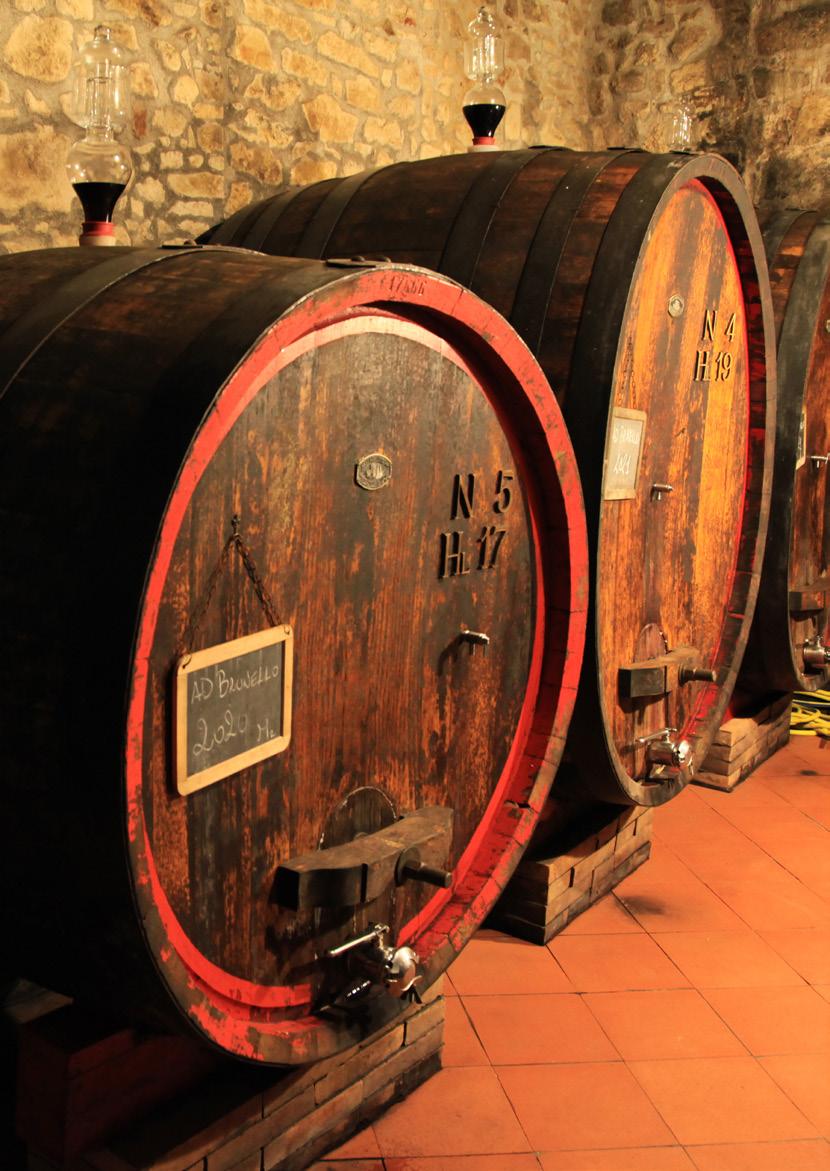
WHEN AND HOW TO DRINK THE WINES OF IL MARRONETO
Personally, I feel the biggest missed opportunity occurs when people assume these are bold, rich wines that have to be aged for extended time.
These wines are gorgeous at any stage of their evolution. Tasting from Botti convinces me of that. They will age exceptionally well but to not drink these wines in youth, as well as with age, is an error. The Rossos do offer a real chance to get a feel for the estate but should certainly not be viewed as “Junior”. A great wine is always a great wine and this is another estate that proves just that… Whether to decant or not is often a personal choice. I would serve from the bottle but pour early and enjoy the wine developing in the glass.
THE VINTAGES
2018 2020
The 2018 vintage comes after a particularly dry 2017, where natural water reserves had been drained. The water is the feature of the vintage, more than cold temperatures. Normal and beneficial rain as well as occasional snowfalls, occurred from the winter and replenished the underground water reserves. The temperatures were too clement for the season, but the bud break was not protracted. The spring was wet with average to normal temperatures, allowing for a good vegetative development and good flowering. The summer was hotter than normal, yet there was no stress on the vines because of abundant underground water from all the previous episodes of rain. Unfortunately, temperature dropped at the end of August leading to uneven ripening of the bunches. Once again, the hot days of September saved the vintage, bringing an early harvest to the cellars, with good maturity but requiring heavy sorting. In the end, the wines are a true reflection of the vintage, not structured and powerful like 2017 but elegant, refined and perfumed. The Consorzio rated 2018 as 4 stars (out of 5).
The 2020 vintage was awarded 5 stars from the Consorzio while wineries only recently started to show their wines. It was an even vintage, warm and dry with no excess. There were beneficial temperature shifts between days and nights, during the ripening period, to develop natural and good acidity. The almost perfect vintage has produced wines with texture, elegance and balance. They are opulent. Alcohol could be high, if harvest had been delayed. The young wines are drinking well now but be sure of their ageing potential.
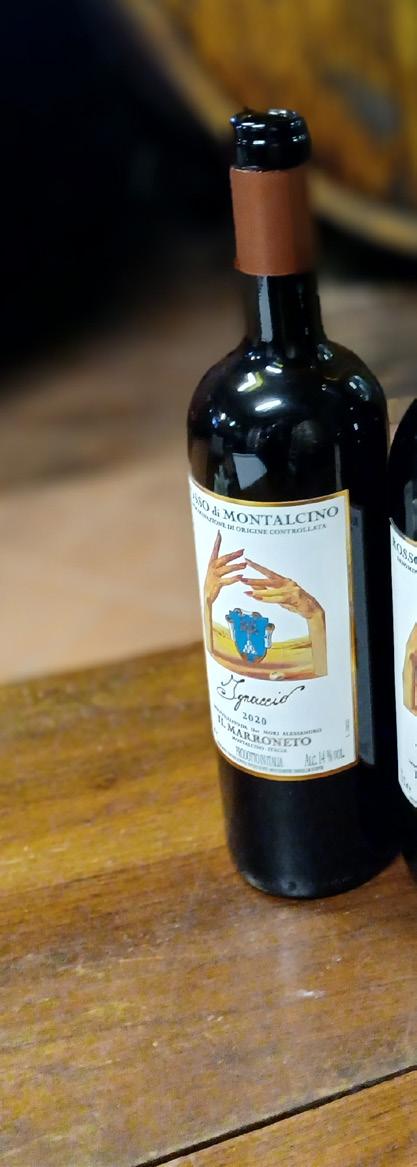
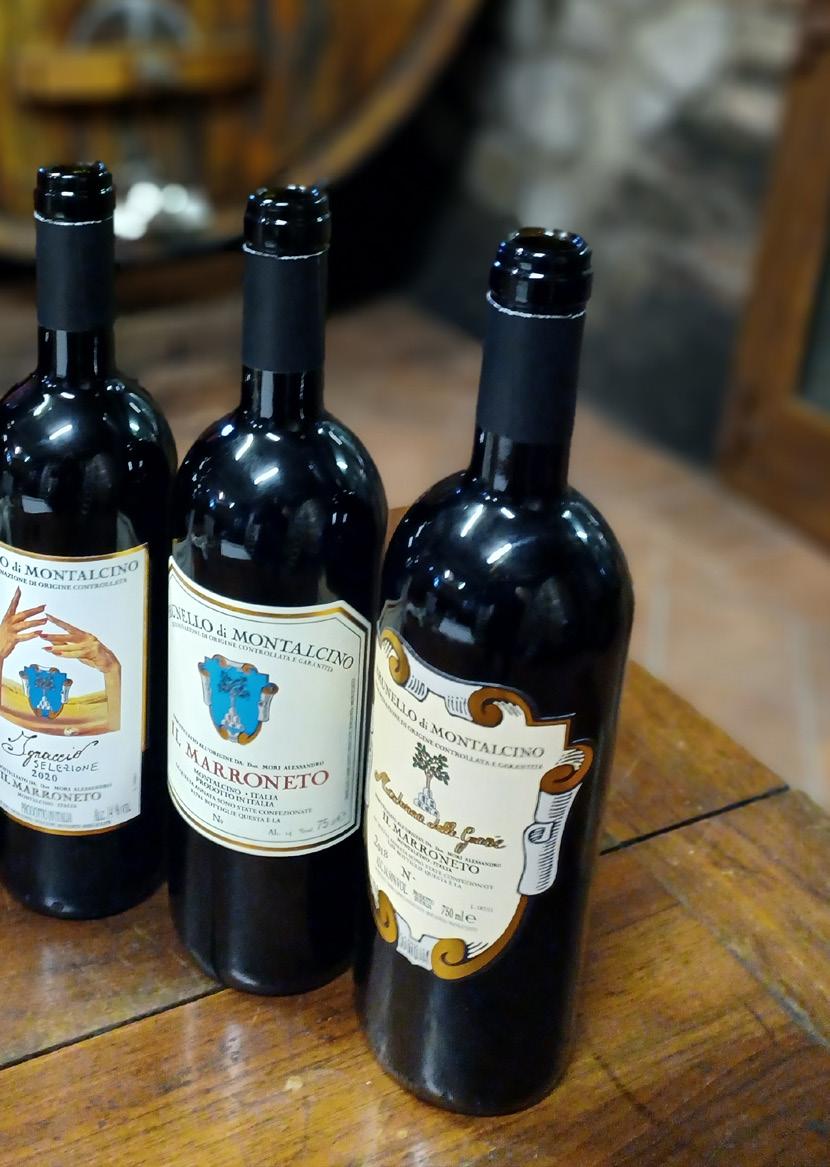
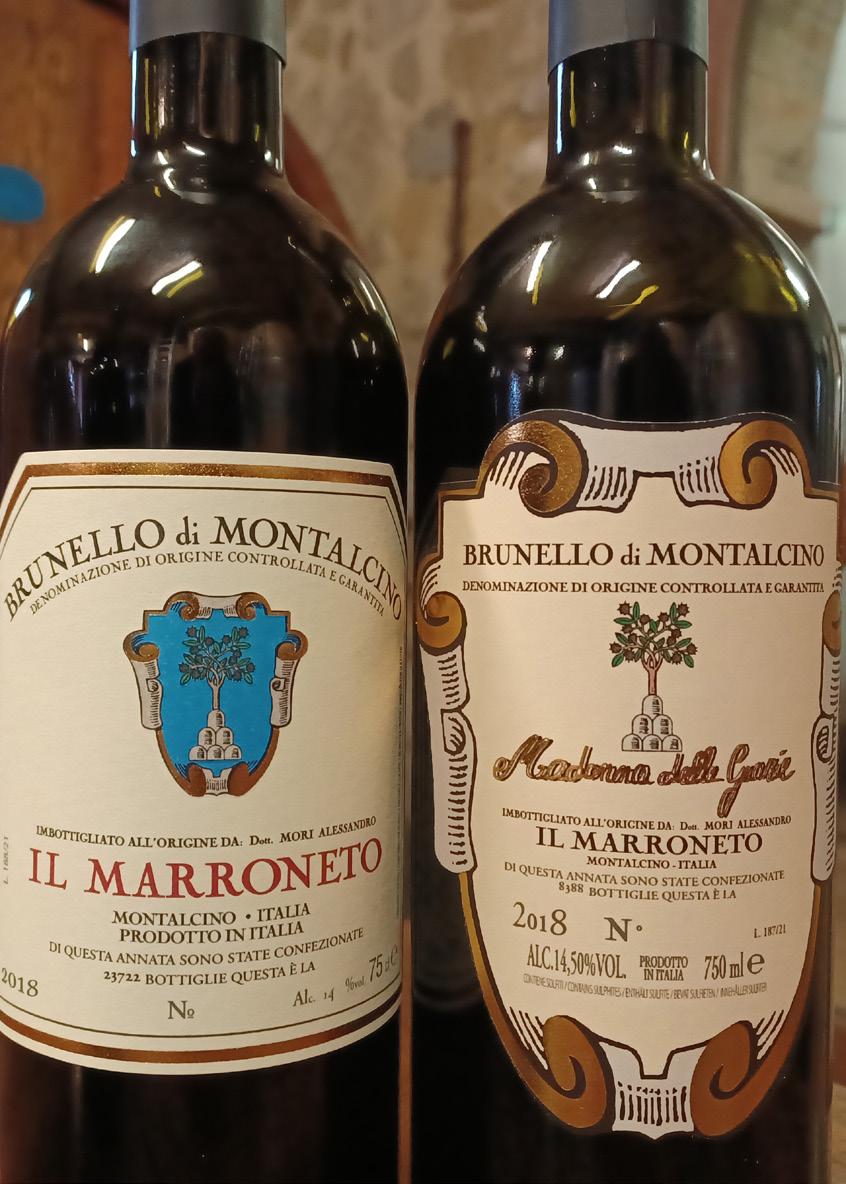
THE WINES
ROSSO IGNACCIO
2020
8,000 to 9,000 bottles made of this wine, on average. The nose is fresh and fragrant from the beginning. Medium body at first on the nose, aromas of freshly pressed grapes come first, followed by crisp red berries. It is certainly inviting. The bouquet is juicy, moreish. The wine is effortless and vivacious, asking for another glass.
Corney & Barrow Score 17.5
Recommended drinking from 2023 - 2033
£210/Case of 6 bottles, in bond UK
BRUNELLO DI MONTALCINO2018
The nose is subtle and elegant, vivacious at first with a marked acidity. Aromas of vine sap and small red fruit jump out of the glass. Yet the wine seems poised. With a twirl in the glass, the wine wakes up to a mix of red fruits aromas. The bouquet is generous, with dark berries, citrus and red fruits aplenty. The vintage was difficult, with some heavy rain. But the result is appealing, pure and lifted. It is a good wine, it is ‘the young sibling’ when compared to the 2019 and 2020 that we tasted from barrel.
Corney & Barrow Score 18
Recommended drinking from 2024 – 2038
£420/Case of 6 bottles, in bond UK
ROSSO IACOPO 2020
This cuvée is named after Alessandro’s son, who is signing this wine. About 3,300 bottles are made. At the end of my notes I wrote it is a baby Madonna della Grazie. From the nose you clearly see it has flesh and power, it is a Rosso plus plus. It has grip, complexity, power, it remains elegant, it is not a “bodybuilder”. It has intriguing red flesh fruit taste and herbal notes of freshly cut hay. It is quite a Rosso.
Corney & Barrow Score 18 - 18.5 Recommended drinking from 2023 - 2038
£380/Case of 6 bottles, in bond UK
BRUNELLO DI MONTALCINO MADONNA DELLA GRAZIE 2018
The same parallel can be drawn for The Madonna 2018 and the next occurrences 2019 & 2020. Although the Madonna della Grazie displays darker, riper fruits than the Brunello, it is a soft, ethereal version of the coming two vintages. This is a true representation of the cool and wet season. The wine keeps its intensity, its power and complexity. The estate Brunello is a ballerina, the Madonna della Grazie is a Modern Jazz dancer. It is rich and voluptuous while retaining precision and balance. This is a blessing…
Corney & Barrow Score 18.5 - 19 Recommended drinking from 2024 – 2040
£1,500/Case of 6 bottles, in bond UK
Tasting Guide
Our tasting notes provide full details but, at your request, we have also introduced a clear and simple marking system. We hope these guidelines assist you in your selection. For the benefit of simplicity, wines are scored out of 20. We will often use a range of scores (e.g. 16.5 to 17) to indicate the potential to achieve a higher mark. When a ‘+’ is shown it adds further to that potential. Wines from lesser vintages will, inevitably, show a lower overall score.
Wines are judged, in a very broad sense, against their peers. Why? Well, you cannot easily compare a Ford with an Aston Martin, other than they are both cars and have wheels. It is not that different with wine. A score is a summary only. The
devil is in the detail, so please focus on the tasting notes and, as always, speak to our sales team.
CONTACT US
HONG KONG 12th Floor, 16 Ice House Street, Central Hong Kong T +852 36 94 33 33 hongkong@corneyandbarrow.com
FACEBOOK @corneyandbarrowhk INSTAGRAM @corneyandbarrowhk
www.corneyandbarrow.com.hk

www.corneyandbarrow.com.hk
